New Seed Society
Research / Design
2020 – 2021
For my thesis project at CIID, I explored the roles that design and technology could have in helping rural communities adapt to a changing climate. This project was a 2021 winner in the Core77 Design Awards.
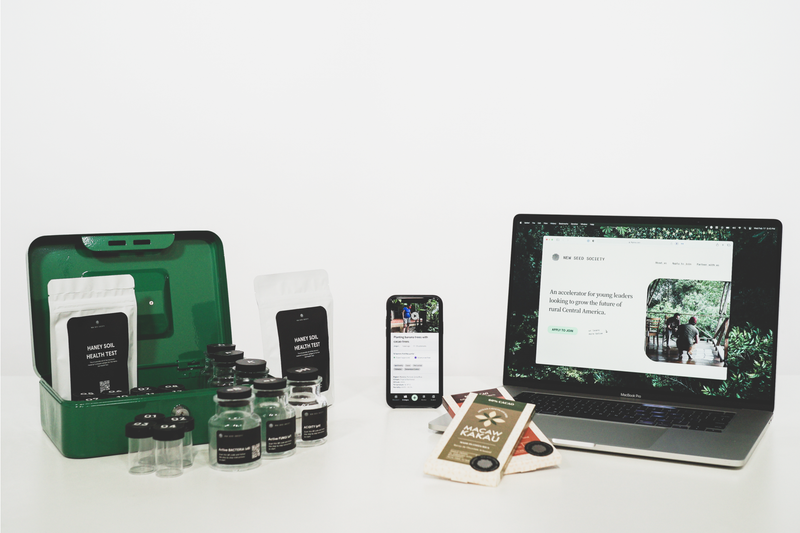
Concept Video
Background
Today, rural communities in Central America face many challenges. The combination of degrading soils, changing climate, and falling prices make it harder for traditional smallholder farmers to make ends meet. If we do nothing, it is projected that we will see up to 3.5 million climate migrants in Central America by 2050. Globally, it is projected that we’ll see over 140 million climate migrants in the same timeframe. Smallholding farmers will make up a significant portion of those numbers and perhaps the most vulnerable subgroup.
However, an emerging farm model that combines regenerative agriculture, specialty products, and ecotourism shows that a brighter future is possible. Because these farms have healthier soil, richer biodiversity, and healthier crops, they are more resilience to the changing climate. These conditions also allow the farmers to sell their products for higher prices, bring in tourists, and provide educational workshops, all of which provides the farmer with more economic resilience. Perhaps most importantly, the presence of a regenerative farm in a rural community can often inspire others to do the same, reduce brain drain, and change the trajectory of the entire community.
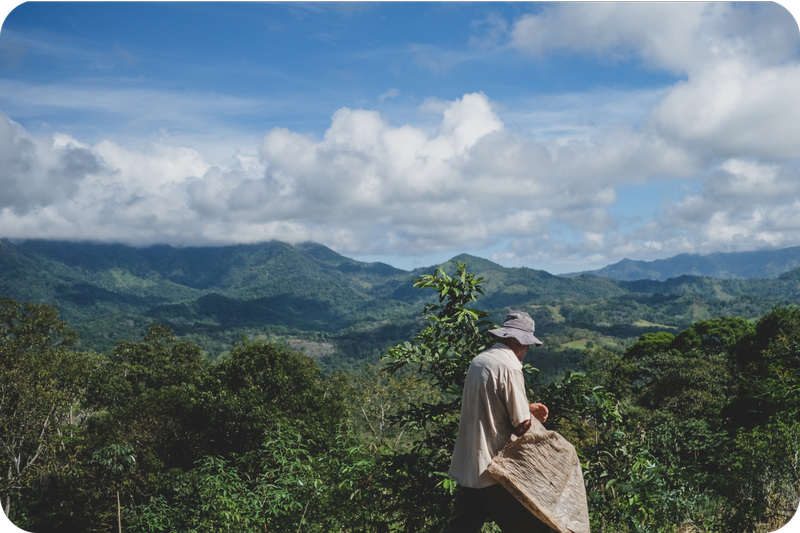
Traditional smallholding farmers in Central America are seeing yields drop year after year.
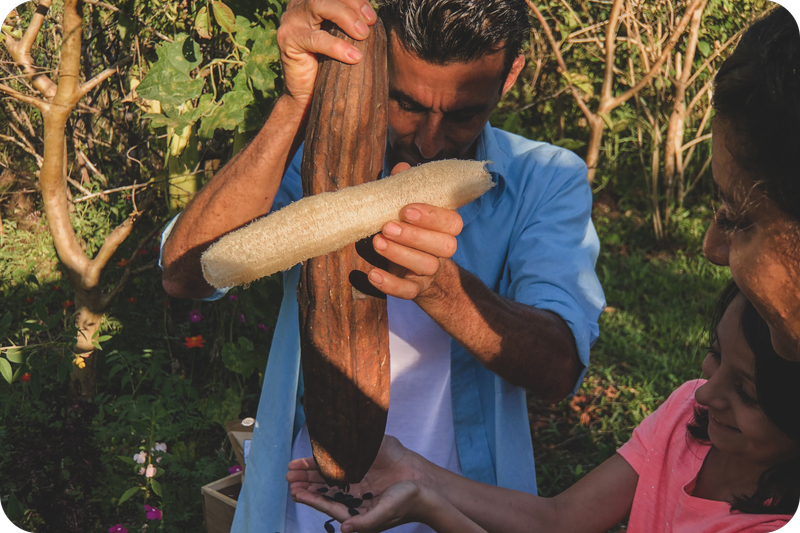
Ecoagrotourism farms offer an emerging model that can be both more resilient and profitable.
Concept
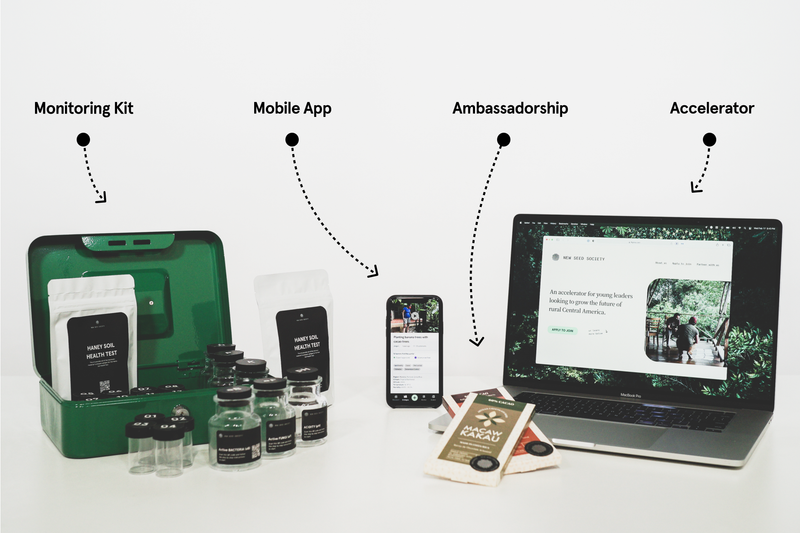
The New Seed Society is a holistic program that seeks to accelerate the creation of regenerative businesses in Central America in order to promote more resilient rural communities in the face of a changing climate.
The ideal participants are budding entrepreneurs from rural women groups and those with a background in agriculture, business, or tourism who want to stay or return to rural communities. Through mentorship and peer-to-peer learning, the focus is to help participants flush out their vision, establish their business, build out their farm, and help other farmers to do the same.
The New Seed Society landing page introduces the accelerator program to prospective farmers. The accelerator program provides participants with the upfront agricultural and business guidance they need to get the regenerative business off the ground.
New Seed Mobile app helps regenerative farmers to connect and share regenerative strategies and business opportunities with each other. Left to right: share challenges you are facing with the community, get support from the New Seed community and knowledgebase, get timely notifications about weather and business opportunities, keep track of key regenerative agriculture indicators with easy to follow step-by-step guides.
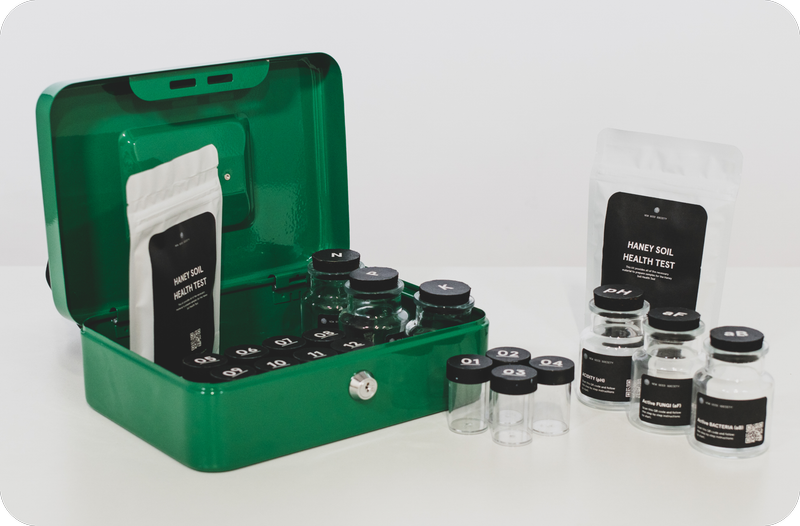
The New Seed Monitoring Kit allows farmers to track key regenerator indicators like soil health, biodiversity, and crop quality over time. This allows users to make better farming decisions and contribute to decentralized research efforts.
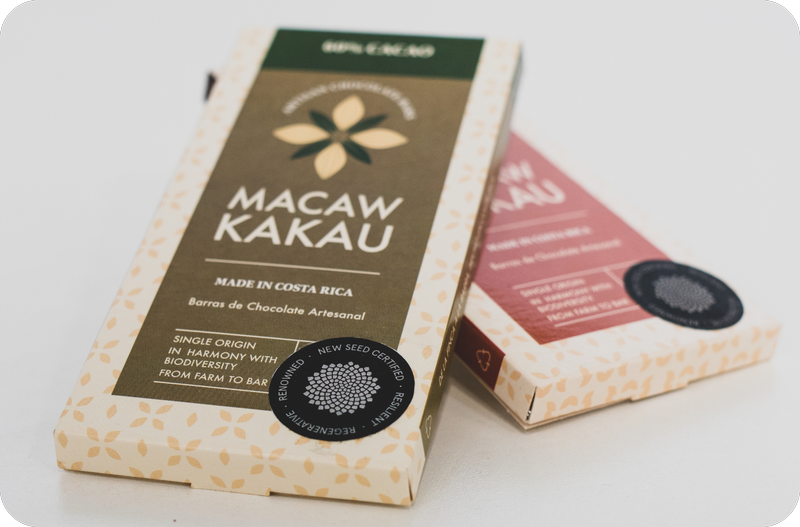
The New Seed Ambassadorship program rewards participants who become regional education hubs with a prestigious certification and consumer recognition.
The program consists of four distinct parts to support entrepreneurs with the most failure-prone parts of the process. The New Seed Accelerator program provides participants with the upfront agricultural and business guidance they need to get the regenerative business off the ground. The New Seed Mobile app helps regenerative farmers to connect and share regenerative strategies and business opportunities with each other. The New Seed Monitoring Kit allows farmers to track key regenerator indicators like soil health, biodiversity, and crop quality over time. And the New Seed Ambassadorship program rewards participants who become regional education hubs with a prestigious certification and consumer recognition.
The New Seed Society feeds into many of the UN Sustainable Development Goals including no poverty, quality education, decent work, reduced inequalities, sustainable communities, responsible production, climate action, life on land, and partnerships for the goals.
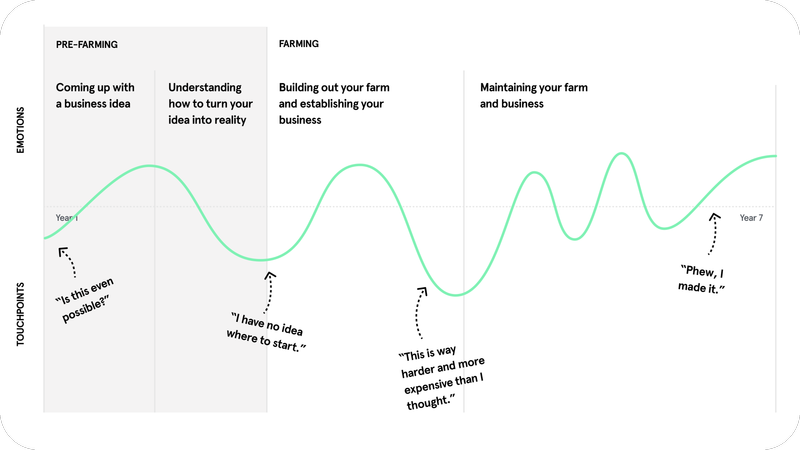
A journey map that illustrates some of the biggest barriers farmers face as they seek to build or transition to a regenerative farm.
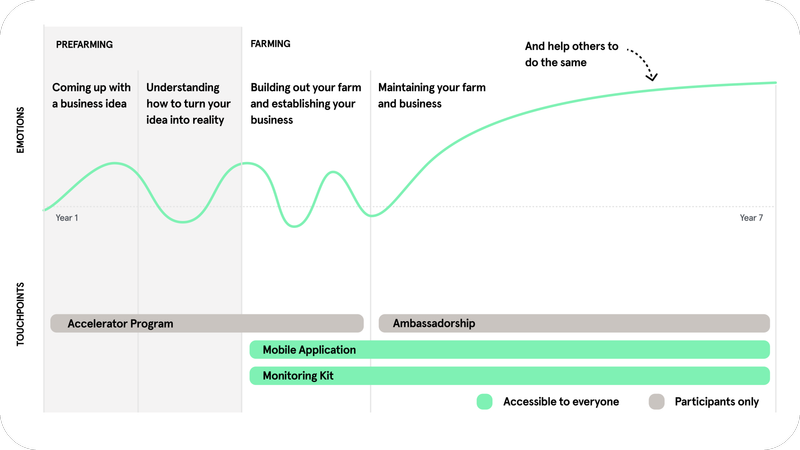
The program supports farmers during crucial moments as they are build out their farm and encourages them to support others in doing the same.
Motivation
Throughout my career, I have been exploring the intersection between design, technology, and socially impactful work. Over the last few years, I have been especially interested in exploring the role that designers can have in addressing climate change. This curiosity is what led me to study at the CIID interaction design programme in Costa Rica in 2020. In the last year, I have had the chance to explore a few projects focused on climate change mitigation (e.g., reducing greenhouse gases).
However, I always faced an uneasiness while working on these projects in Costa Rica: Central America is responsible for less that 1% of global emissions yet this region is one that will be hit hardest by the impacts of climate change. It occurred to me that in this local context, designing for adaption is be more crucial than designing for mitigation. For that reason, I decided to focus my 9-week final project on the topic of climate adaptation in Central America. Furthermore, I wanted to examine how design could connect different parts of a system to address a systems-based problem. In an intentional effort to push boundaries, I wanted to explore a life-centered solution that’s impact went beyond the direct user, their community, or even humankind in general.
This is a very broad field. The way we plan society works against the actions we need to take. It's very fragmented. Different disciplines need to be connect but it's hard to happen given the social and political systems.
Javier Espeleta
Climate Change Scientist
Research and Insights
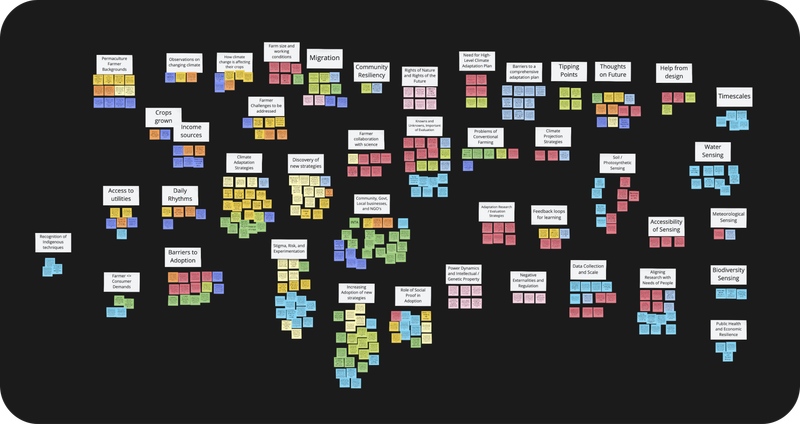
It is projected there will be over 3.5 million climate migrants in Central America by 2050. Globally, that number swells to 143 million.
NYTimes + ProPublica + World Bank, 2020
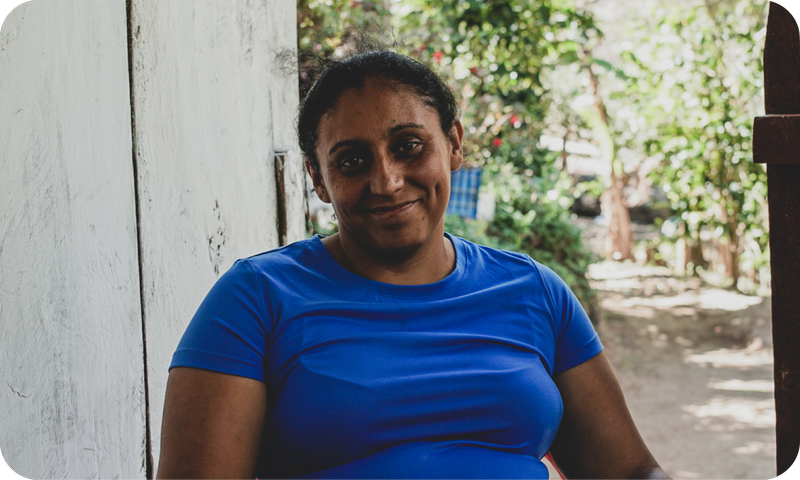
Xiomara, a smallholding farmer in Honduras, helped me to empathize with some of the bigger trends at a human level.
For the research part of my project, I conducted in-depth interviews with over 13 participants, including local smallholder farmers and experts in the fields of climate change, climate adaptation, climate migration, and agriculture. I conducted desk research that included scouring through academic literature and reading through a dozen detailed reports. And I also conducted field visits to two different rural communities in Central America.
Based on numbers projected by the World Bank Groundswell Report and a climate model produced by ProPublica, it is projected that there will be over 3.5 million climate migrants in Central America. Globally, that number swells to 143 million in business-as-usual situations. Smallholding farmers are expected to make up a large portion of this migrants.
Xiomara, an older Honduran farmer I met, illustrates what this means at a human level. Her and her husband have owned their farm for the last 15 years and primarily grows rice, beans, and corn for themselves. Over the last ten years, she has seen her crop yield drop from 10 loads to 2 loads. She attributes this to degrading soils, less rainfall, and more irregular seasons - observations confirmed by climate experts. The only thing she knows how to do is to keep adding fertilizer to her land but it is costly and crop yields still continue to drop. She expects she will have to abandon the farm in the next few years if the situation continues to get worse. She has no idea where she would go.
When talking to experts about how to help smallholding farmers like Xiomara, the word resiliency often came up. And when it comes to rural resiliency, the field of regenerative agriculture was regularly cited. While farmers can’t do much to reverse the effects of climate change, they can adopt practices that improve soil health, biodiversity, and crop health. This, in turn, can increase their climate and economic resiliency.
The story of Jorge, another farmer I visited, exemplifies the benefits of the regenerative agriculture model. Jorge was a talented youth who left his community to study tourism at a young age but came back to takeover his parent’s abandoned cacao farm. He revived many of the ancestral practices that his grandparents used and combined it with strategies he learned from online regenerative communities. His farm operates a lot like a rainforest ecosystem and is much more resilient against climate shocks than conventional farms. Because his crops are higher quality, he could transition from selling commodity cacao to specialty markets and supplement his income with farm tours and educational workshops. His farm has also inspired many others around him to do the same.
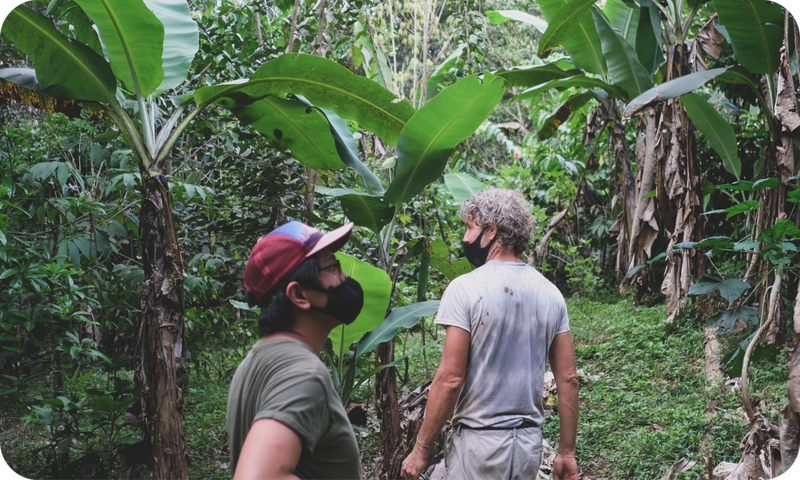
A regenerative farm I toured in the Mastatal region of Costa Rica. Its practices of agroforestry, cover-cropping, and polyculture made it feel more like a rainforest than a traditional farm.
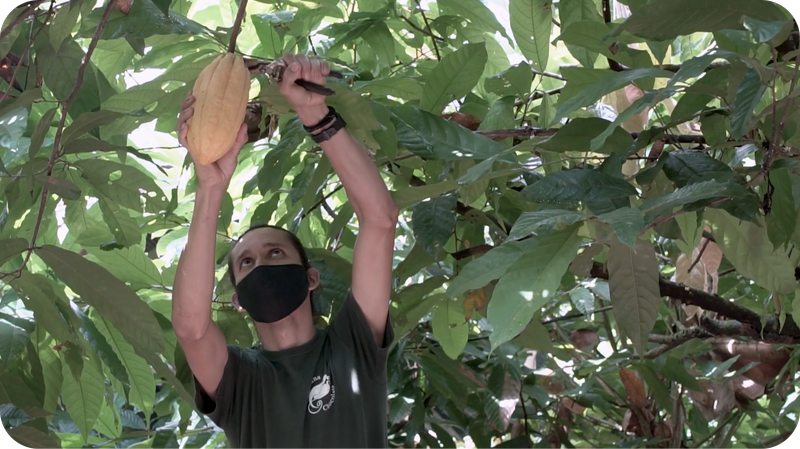
Jorge, a regenerative farming pioneer in Costa Rica, harvesting cacao pods in his family farm.
If they don't trust you, they are not going to do anything with you. To build that trust, it takes a very long time.
Edgar Espeleta
Fmr. Minster of Environment
Costa Rica
They are used to a way passed on from previous generations. Even if they know their system isn’t the best, they are afraid of a change that might produce even less yield.
Ana Duran
Climate Scientist
University of Costa Rica
However, when I tried to come up with ideas on how to help older traditional farmers like Xiomara to adopt regenerative practices, I found myself confronted by many systemic barriers. Farmers are immediately suspicious of outsiders and it can take years of trust-building to get them to collaborate with you. This is compounded by the fact that you are trying to get them to change an entrenched way of thinking. And lastly, a successful intervention requires deep knowledge of the local context – geographical, environmental, and cultural. This all made a direct intervention with experienced smallholding farmers a non-starter.
When I started to learn more about how other regenerative farmers got started, I realized they were mainly younger people. They tended to be talented youth who left to study agriculture, tourism, or marketing and came back to their community. Or they were entrepreneurial women from rural women’s groups who tended to look at things more holistically and were trying to gain more independence. It hit me if you could empower these young entrepreneurs to become regenerative farmers, they could act as a bridge to support older or more risk-adverse farmers. This approach skirted around many of the systemic barriers I encountered.
All of this lead to me to my initial concept direction - how do we help more rural entrepreneurs to successfully start their own regenerative businesses so that they can become a bridge to create more resilient rural communities?
If systemic barriers make it hard for older traditional smallholding farmers to adopt regenerative practices, could we instead target younger entreprenueral folks and have them provide the social proof and support to others in the community?
Brainstorming, Co-creation, and Prototyping
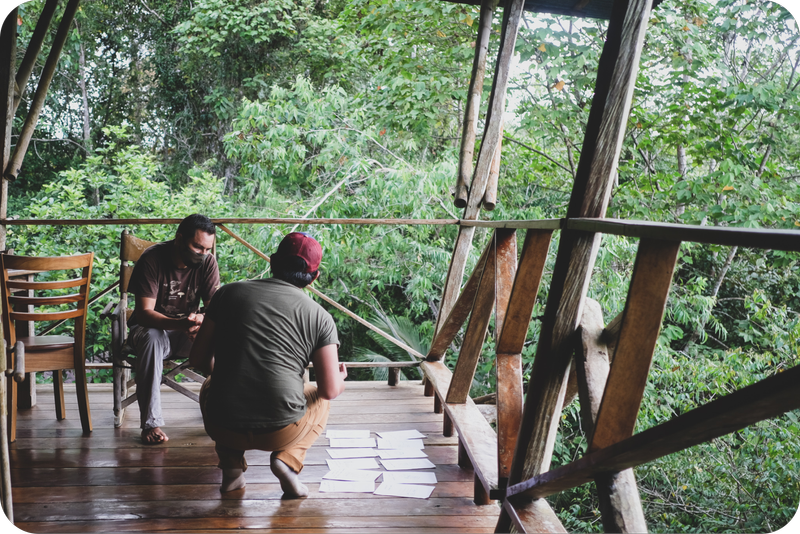
With a clear concept direction, I set out to bring life to my idea. In summary, I led two brainstorming sessions with classmates, visited two rural communities, co-created with six farmers and five subject matter experts, and conducted three usability testing sessions. In an effort to generate as many ideas as possible, I recruited my classmates for a group brainstorming session. Because the subject matter was quite different from their backgrounds, I decided to conduct a narrative brainstorming session where I had them first read a day-in-the-life story of a farmer in order to help them to better empathize.
From these brainstormings, the concept of an accelerator program was born. I went out to test whether the idea of an accelerator was interesting and was met with a lot of positive feedback from both farmers and subject matter experts about this general direction.
With this validation, I flushed out the initial touch points and generated more ideas with classmates through brainstorming sessions around specific touch points. With many ideas now in mind, the clear next step was to validate with farmers and subject matter experts which ideas actually resonated. Through card sorts, field visits, and in-depth interviews, I developed a much clearer sense of the struggles that regenerative farmers faced faced early on and what type of support would be most useful in helping them to be successful.
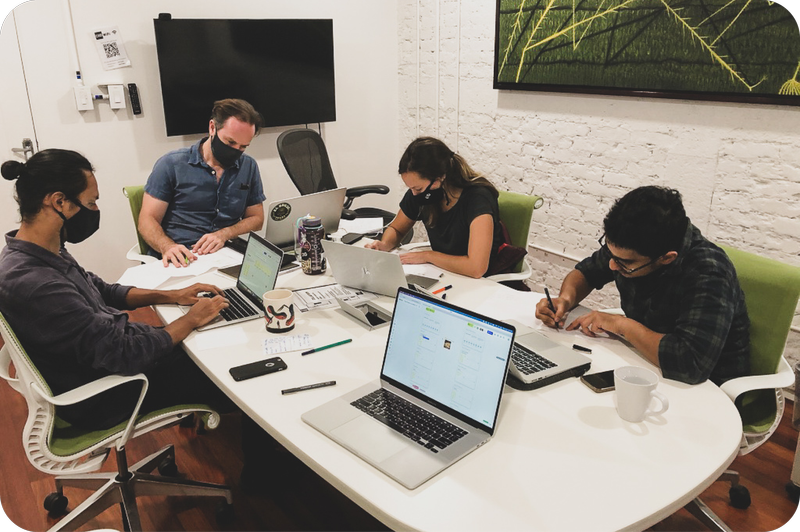
Visual brainstorming session with CIID classmates around service touchpoints.
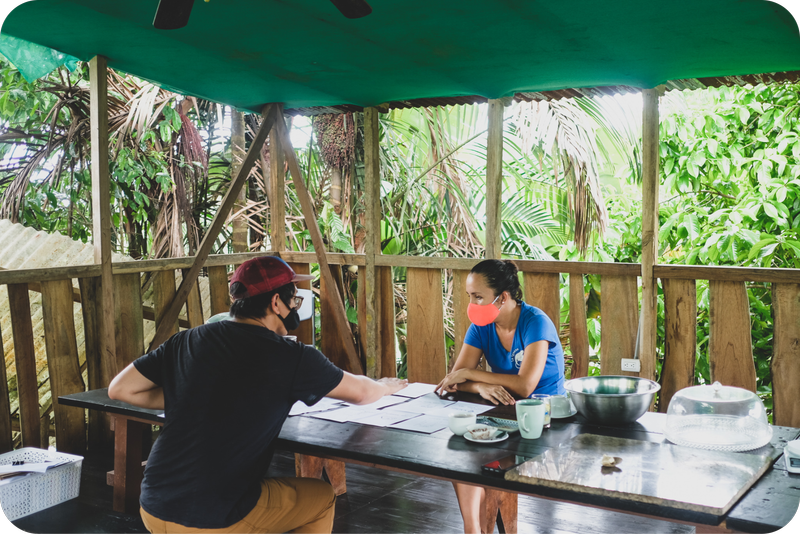
Card sorting ideas with a regenerative farmer in Costa Rica.
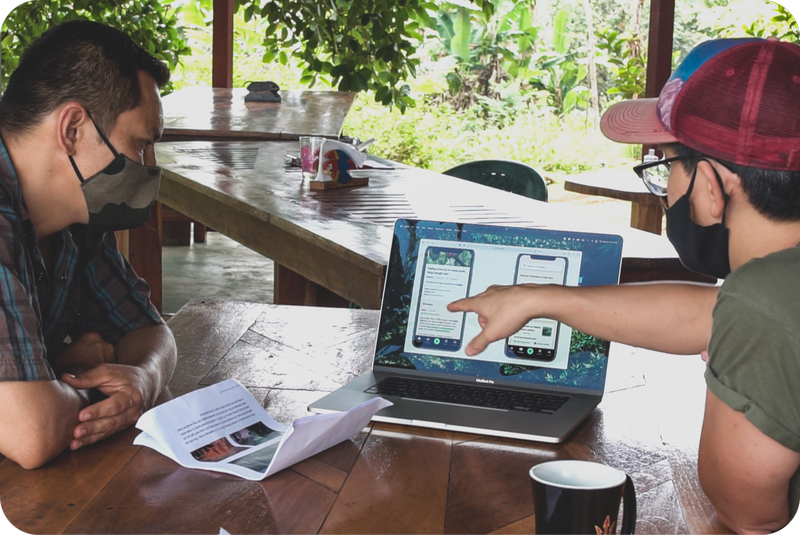
Usability testing with a young rural entreprenuer.
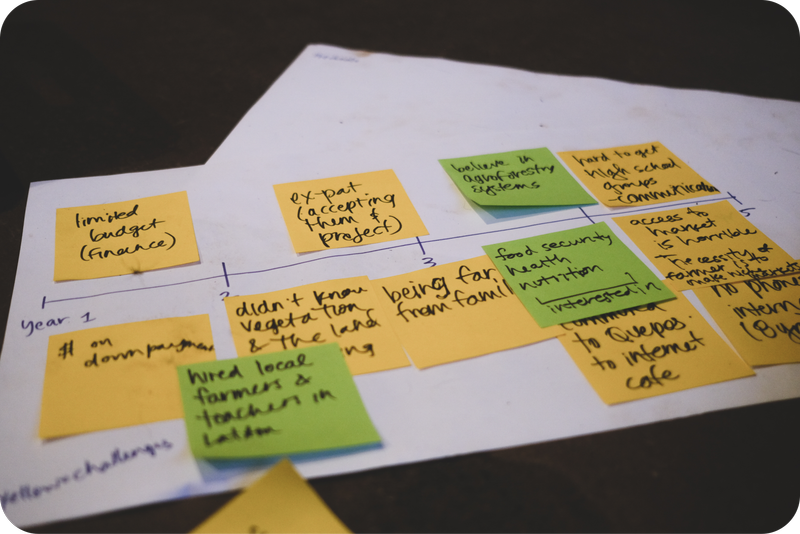
Emotional seismograph performed with a regenerative farmer.
I learned that sharing the stories of existing regenerative entrepreneurs was the best way to help inspire young people to visualize themselves going down the same path. I learned early on that access to land, loans, and specialty business connections were the crucial factors. I learned that providing a foundational regenerative agriculture framework is important to successful implementation of regenerative strategies. I learned that, in the first few years of building a regenerative farm, there is an intense phase of trial and error that requires lots of support. I learned that leveraging ancestral craft from older farmers in the region was the most useful resource and learning from the experimentation of other regenerative farmers in similar regions was a close second.
Lastly, I learned that without collaboration with research institutes, the emerging field of regenerative agriculture would never receive the institutional support from companies, government, and funders to truly take off. Widespread adoption of a regenerative agriculture program would require proper evaluation.
From these co-creation insights, I came up with the four touch points in my final concept - the accelerator program, the mobile app, the monitoring kit, and the ambassadorship program. I designed higher fidelity versions of my touch points and brought them back out into the field for usability testing and feedback.
From these higher fidelity usability testing sessions, I learned that videos were the best medium for sharing problems and solutions. I learned metadata such altitude, soil type, temperature range, and humidity range helped farmers to know whether a specific strategy would work for their region. I learned that providing contact information for suppliers of specific seeds or other input materials removes a key barrier to adopting a new practice. I learned that certification offers a clear set of guidelines that could incentive farmers to work with their community and pay back loans. And I learned about other governmental, non-profit, and research institutions in the region could be potential collaboration partners.
These final adjustments led me to my final iteration of the New Seed Society.
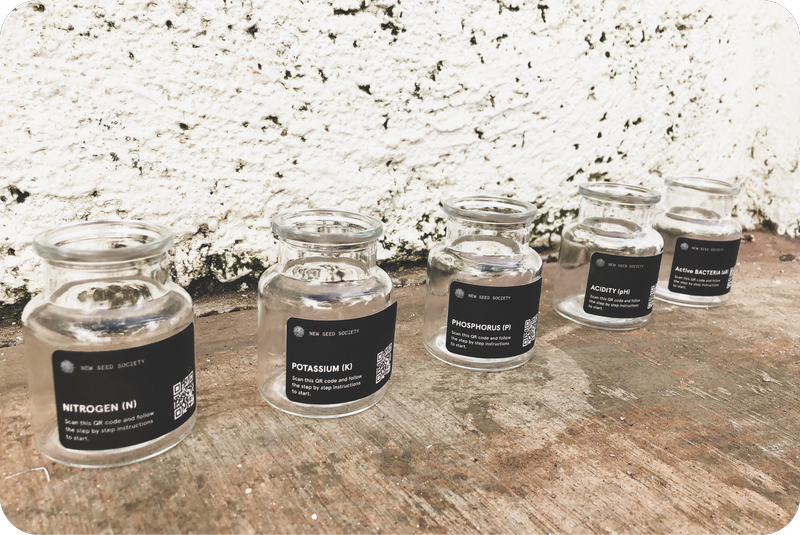
High-fidelity soil assay prototypes.
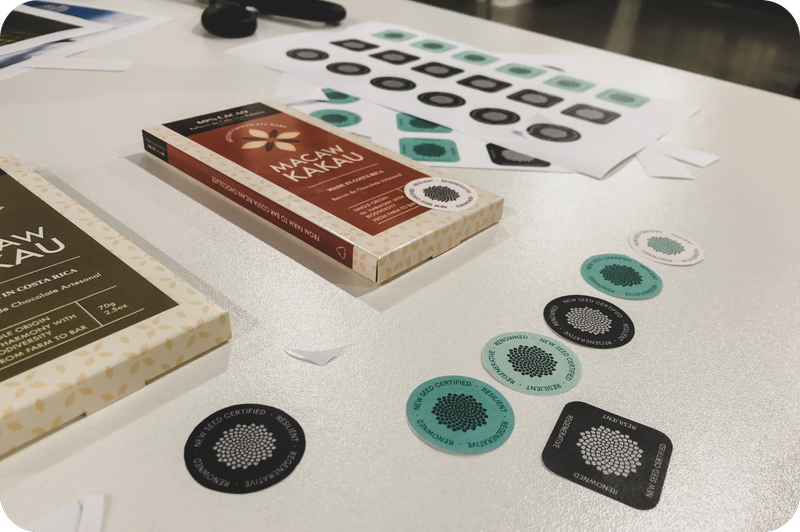
Prototyping variations on certification stickers.
Overall Feedback and Next Steps
What caught my attention was the intention to repair the gap between the old and young. It will important to do this in a way where the older farmers don’t perceieve being replaced or their knowledge being drained.
Rebeca Mora
Biologist
I am sending to a friend the link of your video because it gives hope to the rural youth. If you need or want to talk more about this, let me know.
Edgar Espeleta
Former Minister of Environment
At the end, I was able to gather feedback from various farmers and subject matter experts. I was pleased to receive quite positive feedback from many people in the local context. I had a handful young potential rural entrepreneurs ask me if this was a real program and if they could join after watching the video. And lastly, I received an email from the Coffee Institute of Costa Rica stating, “We are currently working on launching a project focused on supporting youth in coffee farmers through technology and education, and I think your project really aligns with what we are thinking… We would love to explore opportunities to see how we could scale it up.”
Given the genuine interest and local engagement, I am looking into opportunities to bring this short 9-week project to life. My immediate steps would be to continue to meeting with local stakeholders and farmers to iterate on the touch points. I would also likely start out by bootstrapping these concepts with existing technologies during the pilot year in order to learn more about touch points and features that would really resonate.
Throughout the project, my goal to combine empathic research, thoughtful design, appropriate technology, and high level climate goals to achieve a result that could truly change the lives of people at their most vulnerable. I hope that the current state and future iterations of this project will live up to that ideal.